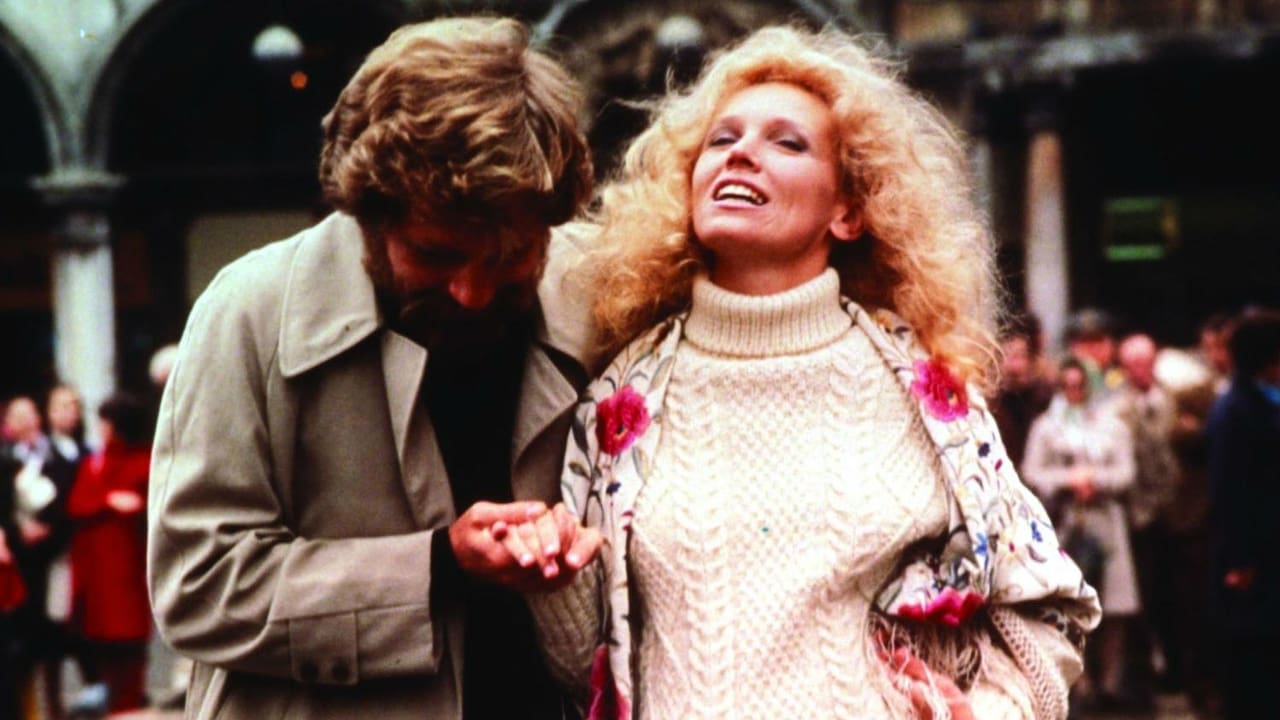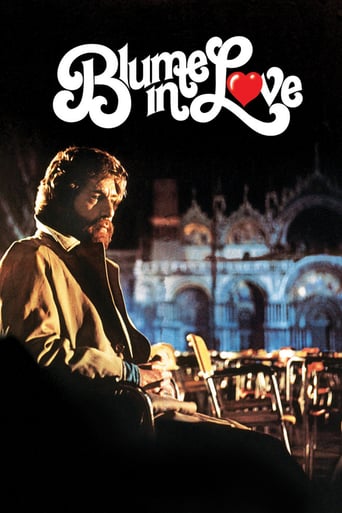

Plot (or what there is of it)—Husband Blume is divorced by wife Nina after she catches him philandering. Trouble is he still loves her and spends the rest of the time trying to get her back. So how is true love distinguished from true obsession.Critic Leonard Maltin calls the movie "self-indulgent" and he's right. It's like writer-director Mazurski has gone off on his own personal tangent and made a movie of it. Segal does manage a role in low-key style that could have easily gone over the top. Too bad there's no hint of his very real comedic skills, which I somehow kept expecting. Also, he may get more close-ups than my favorite puppy. As Nina, Anspach has a different look with her long thin face and cloud of platinum hair. Hers is the more interesting character as she struggles with middle-class conventions like marriage. But what's with Shelley Winters' tacked on role as a grieving divorcée. Perhaps Mazurski was reminding casting directors what an inimitable presence she is.Arguably, the film's best parts are those reflecting political (the farm workers) and youth culture (the "swingers" meeting place) of the early 1970's. It seems Nina is groping for a life outside the conventional but is emotionally stuck halfway. Anyway, her character is the more interesting of the two. At the same time, Elmo (Kristofferson) appears more like a rootless hippie, while Nina connects with that unconventional side. Even Blume seems attracted when a kind of unconventional threesome forms. Nonetheless, such deeper themes remain conjectural, while the movie itself over-stretches into a barely entertaining two hours that a graphic rape scene doesn't help. All in all, Mazurski's screenplay may be based on a personal experience that somehow got carried away.
... View More***************WARNING MAY CONTAIN SPOILERS**************Made in the seventies by director Paul Masursky with George Segal Kris Kristofferson, Susan Anspach and Shelley Winters. I first saw this on ex-rental video and was surprised that it was (and still is), a good film. I'm not a big Masursky fan but he was modish for a period and his work rose to prominence with the romantic comedy Bob & Carol & Ted & Alice, which I have never seen because it was considered too risqué for children. (Definitely showing my age here, folks).As a follow-up, 'Blume in Love' is another thoughtful and funny meditation about relationships, seen from the point of view of Segal (as Blume) trying to win back his ex-wife who has left him and made a life of her own that, unfortunately, no longer includes him. Blume's wife has shacked up with a musician and dropped out of the middle class rat race. Since he is a lawyer, Blume believes that his wife is being unfair by comparing his uptight lifestyle with that of her boyfriend. As a result, he takes action of a drastic nature which only serves to alienate his wife even further.Blume appears to be a loser in love and Segal gives us a sympathetic portrayal of a romantic who is confused, but lovable. His wife may not love him but the audience is meant to. There are some amusing situations and interesting observations about the 70's singles scenes when women were supposedly liberated. That did not mean however, that they were necessarily happy. There is an excellent dream sequence later on in the film, shot outdoors in Venice as Segal imagines that he has successfully retrieved his wife from the hands of the hippie wastrel Elmo (as played by Kris Kristofferson). The sequence is set against a backdrop of classical music and a lot of flying birds in a beautiful looking Venetian square densely populated with many Italian people sipping on their cappuccinos. It serves to illustrate the Hollywood belief (or is it cliché?) of the eternal nature of romantic love and Blume's foolish hopefulness that his wife will reject Elmo and return to him.Susan Anspach plays Blume's ex-wife, (she was also Woody Allen's ex-wife in Play it Again, Sam) and Shelley Winters has a single scene as a client of Segal's (if I haven't already mentioned Blume is surprise! a divorce lawyer) which is quite funny but seems irrelevant to what is going on in the rest of the movie. Maybe its meant to illustrate how neurotic divorced women are supposed to be, who knows?'Blume in Love' is the type of film that will leave cynics to protest about how warm and fuzzy it makes them feel while the rest of us will have no reason to complain. 'Blume in Love' is delightfully wry and observant and I hope this review reveals my fondness for it
... View MoreThis was a fairly ground breaking movie when it came out first. I saw it in the theatre and we talked about it for days afterwards, especially the character of Nina Blume, here played by Susan Anspach. She was complex, feminist, independent and strong and also very likable. That is what I remember, that and the closing scene in Venice with Tristan Und Isolde played by the orchestra and the camera panning upwards, leaving all the conversations taking place in the piazza still ringing in our ears until the last freeze frame. **Warning***Spoiler*** However, and it is a big however, the rape scene, watched anew is sickening and repulsive and had me disliking Steven Blume, played by Gerge Segal, intensely. This does not bode well for the remaining quarter of the movie which demands that I applaud his compulsive obsessive efforts to woo his ex-wife back into his life. I am surprised none of the other reviewers addressed this truly nasty scene on which so much hinges thereafter. ****spoiler over**** Kris Kristofferson gives one of his standard hazy pot-filled performances, all charmy, twinkly eyed and gravelly voiced. So charmy in fact that Steven Blume along with Nina falls for him too. Marsha Mason gives a multi-layered characterization, whatever happened to her, I believe she married Neil Simon, the playwright. A fine performance. Susan steals the show, her beauty at times is breathtaking. One scene has Steven looking at her across a room and she is ethereal, all blonde curly hair and soulful eyes. 7 out of 10, short on plot, long on talent.
... View MoreI have never forgotten the scene where Susan Anspach glides gracefully across the screen towards George Segal to the accompaniment of Wagner's Liebestod from Tristan and Isolde. The glorious climax of the music was timed to coincide with the exact moment of their meeting and was, for me, the highlight of the film. Three thumbs up to whomever decided on it's use!
... View More